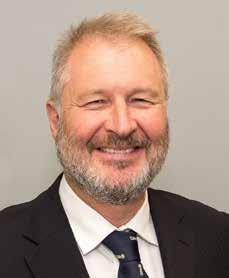
3 minute read
RANZCR: March Message from the President
Dr Lance Lawler
Switching Focus to Avoid Medical Workforce Myopia
In the tumult of the last year, it would be understandable for anyone to have overlooked the significance of Prof Brendan Murphy's move in July from the highly-visible, advisory post of Australia's chief medical officer (CMO) to his near-invisible and decidedly un-advisory role as secretary of the Australian Department of Health.
As the first medical doctor to hold the top administrative job in Australia's healthcare system since 1983, he brings to the post a rare familiarity with the everyday realities of our medical workforce and trainees. His new job also puts him in the unusual position of implementing the new national medical workforce strategy he helped to scope and steer as chair of the Medical Workforce Reform Advisory Committee (MWRAC) and adviser to the previous departmental secretary.
At the time of writing, we have yet to see the finalised strategy, as endorsed by Australia's health ministers, but we have a decent sketch of what it is trying to achieve.
In presenting the ‘scoping framework’ for the new strategy in 2019, Prof Murphy intimated that the medical milestones and technologies of the last century had helped to lengthen our lives. But with rising life expectancies we have become an ageing population poorly served by a health system best suited to managing acute illness in early and midlife, not the ‘multiple, long-term’ chronic conditions common to later life. Murphy saw a partial solution in a shift in planning priorities from specialist to general medicine. ‘Access to an expert in a single condition is welcome, but may not meet [the patient's] needs if that expert cannot advise on how the recommended interventions affect their other conditions,’ he wrote.
A close reading of the scoping framework MWRAC produced in 2019 reveals what the committee sees as its highest priorities in health reform, at least in terms of what stakeholders were telling Murphy and the strength of supporting evidence. The ‘big three’ issues, unsurprisingly, relate to distribution, supply and continuity of care. They are (i) inequality of access to health care in rural areas; (ii) ‘supplierinduced demand’ due to oversupply in certain specialties (the examples given are in cardiology and gastroenterology); and (iii) fragmentation of care resulting from a trend towards more specialisation.
The proposed solutions raised by MWRAC were many. They included various measures to develop a ‘generalist mindset’ among medical students and young doctors, a review of entry requirements for training programs and ‘how they encourage subspecialisation,’ and the establishment of a joint planning commission to determine medical school and specialist college training numbers.
The raft of suggestions recently won broad support from the AMA and the Australian College of Rural and Remote Medicine (ACRRM). In particular, the ACRRM has welcomed recognition of the ‘need to address growing overspecialisation and workforce over-supply in many specialist areas.’
Suffice to say the new workforce strategy represents a ‘shot across the bow’ of the medical colleges, including the College, and a sharp reminder that we do not have absolute authority over specialist pathways. There are many powerful stakeholders in this debate and we would ignore the arguments of the generalists at our peril.
The medical workforce ecosystem—medical schools, specialist colleges, training organisations and regulators—shares the same environment. An individual focus by our College or any other stakeholder on maintaining professional standards among its graduates and Fellows, while vital, is on its own, a failure to see the bigger picture.










